Easy Landscapes to Draw Easy Abstract Landscapes


Large scale wall art doesn't have to be expensive or hard! Learn how to create an abstract landscape on canvas with this DIY abstract art for beginners.
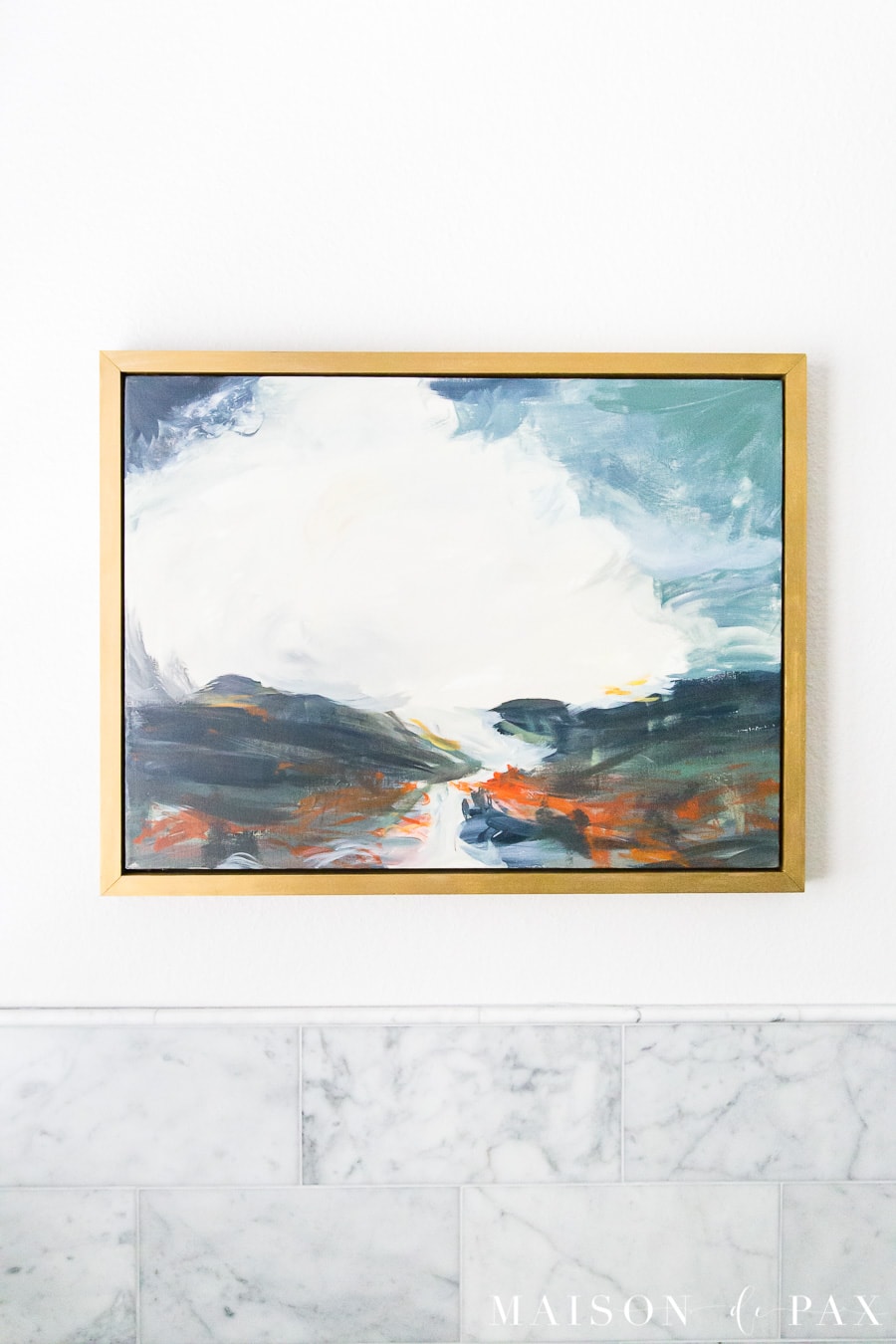
Sometimes bold attempts at something new lead to complete failure (and trust me, I've had plenty of those!)… But sometimes those courageous exploits lead to something beautiful. And my recent attempt at DIY abstract art definitely fell into the latter category.
Ever since we remodeled our master bathroom, I've been dreaming of an abstract landscape for this one wall above the tub, but I never could find the right one. So naturally, I decided to try making one myself. 😉
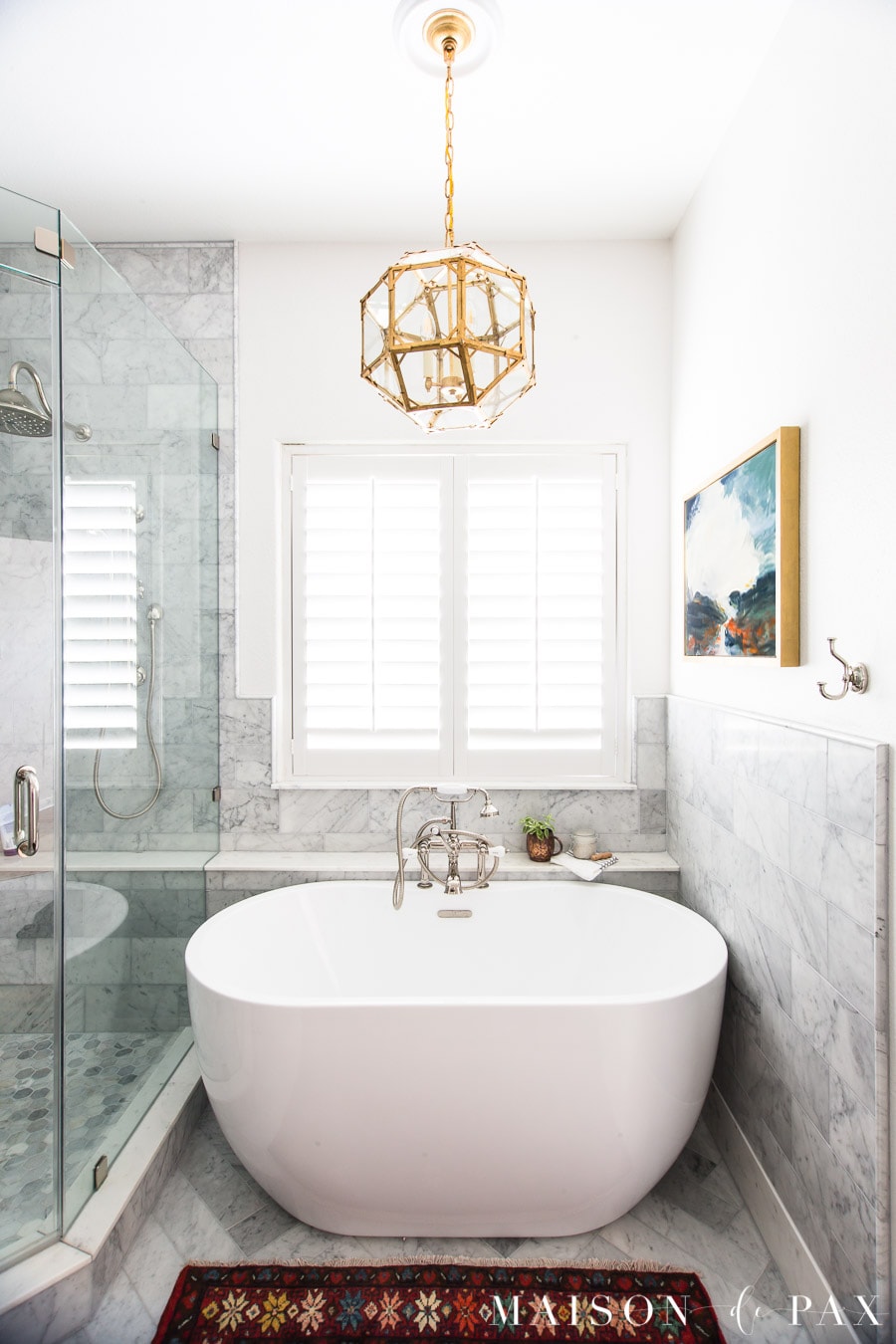
DIY Large Art
I've always been a fan of one beautiful large piece of wall decor or even 2-3 coordinating ones over lots of little ones (I guess it's the part of me that loves minimalism), but large art work can be so expensive. So I'm no stranger to DIY wall art… but I've never made large abstract wall art before.
I have sometimes opted for affordable vintage or modern art that I can print myself (a budget-friendly art option!), but this time I really wanted an abstract landscape painting on canvas.
And I'm no painter. But here's the beauty: that means that if I did it, you can do it, too!
HOw to paint abstract landscapes: Timelapse Video
I actually filmed the whole thing in a timelapse video which I shared on Instagram (and you can watch below). But I also wanted to give you some specific tips for creating your own DIY abstract art landscape.
Tips for Abstract Landscape Paintings
1. Use acrylic paint
I would suggest an acrylic painting, rather than an oil painting, because it's easier to work with water-based paints, and you might even have some already on hand.
And I read somewhere that a cookie sheet with damp paper towels and parchment paper works as a mixing palette for acrylics. I love using things I already have on hand!
2. Start with (some of) the colors you want to end up with
Theoretically, you can make any color of the rainbow from just three primary colors, right? But the reality is that mixing colors is not as easy as it sounds. So I suggest starting with several colors that already have the tones you were trying to reach.
For example, I wanted my painting to complement the rug we have in our master bath, so I pulled together similar blues, greens, pinks, and reds to those in the rug.
Fortunately, my stash of acrylic furniture paint included a lot of color options… but you can also find a huge variety of acrylic paint colors at your local craft store.
3. Gather Inspiration
While I would not recommend trying to copy a painting exactly (for several reasons), I absolutely encourage you to browse online or in art books to find some color palettes and overall scenes that are inspiring to you. I found about five that inspired me in one way or another: colors, shapes, texture, and scene.
As I painted, I sometimes referred back to them to ideas of how to mix my colors or shape my clouds, for example.
4. Choose a Simple Scene
Abstract landscape is just that: a landscape (actual nature scene) that is abstract (yay, freedom!). So when gathering inspiration, choose a basic scene you want to paint.
I found lots of paintings of clouds that I loved and others with rivers coming out of the horizon. So I chose that basic scene: a river coming towards the viewer from the horizon line with large billowing clouds above. But you could do a mountain, or a cliff, or a hill with trees… endless possibilities exist, but I suggest you choose something simple before you begin.
5. Create a Dynamic Background
Now you actually get to start painting! Before drawing any shapes or actual scenery, choose a light, neutral color that goes with your palette.
Use a large brush (if your canvas is particularly large, you can even use a 2″ trim brush like I did!). Dampen your brush ever so slightly and mix the chosen neutral color with a little white. Don't mix them completely; leave the paint swirly and then brush it onto the canvas in broad, random strokes.
This provides a dynamic background for the rest of your painting to layer on top. Trust me, it helps.
6. Use a main color for outlines first
Since I wanted my painting to have a lot of deep blues, I used my deepest, richest blue to paint the rough outline of the scene: the clouds, the land/horizon, and the river. Just like with the under painting, try mixing two colors together without blending them fully.
7. Layer, Layer, Layer
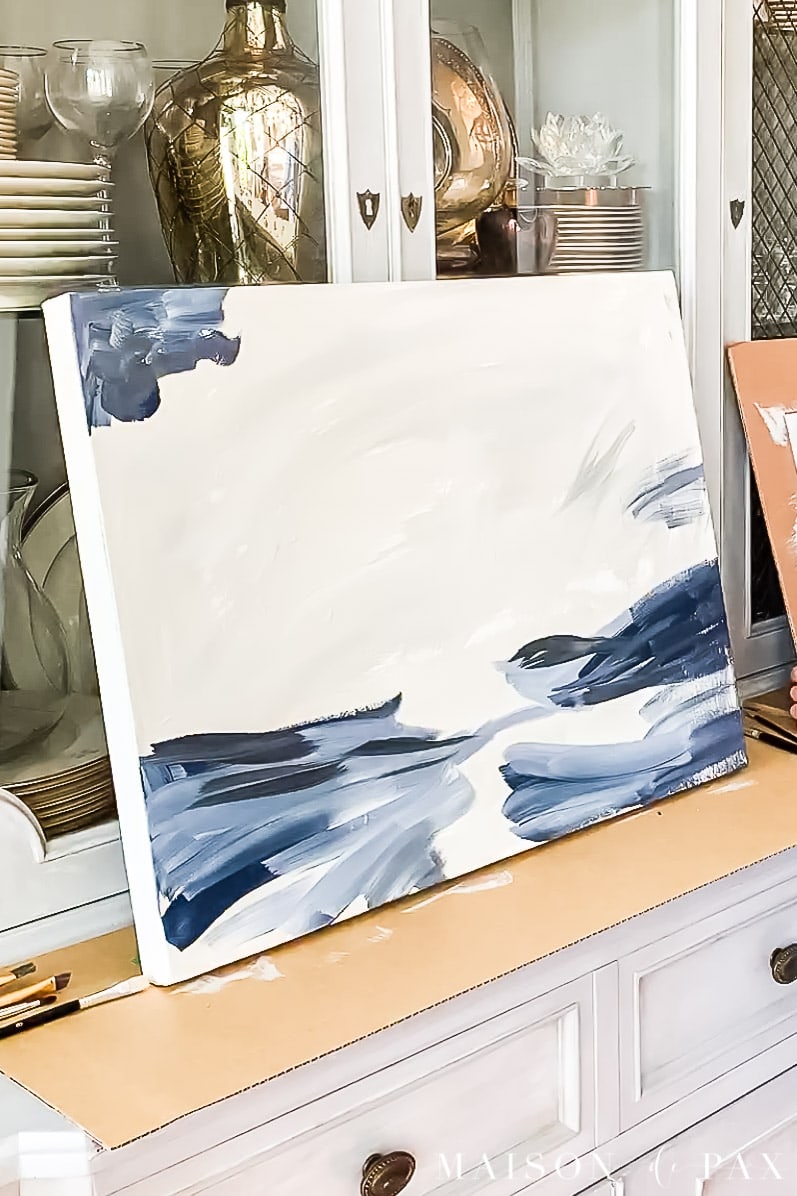
Once the main shape has been outlined, begin layering in the other colors. Again, mix 2-3 colors together on your brush without fully blending.
Try strokes in all different directions until you like it. Even consider blotting or smoothing with a paper towel if something is too thick or harsh.
But don't over blend. Let contrasting colors (like the red) stand out. This was hard for me (as a perfectionist) when I was close up to the painting… but I when I backed up, it was exactly the effect I wanted.
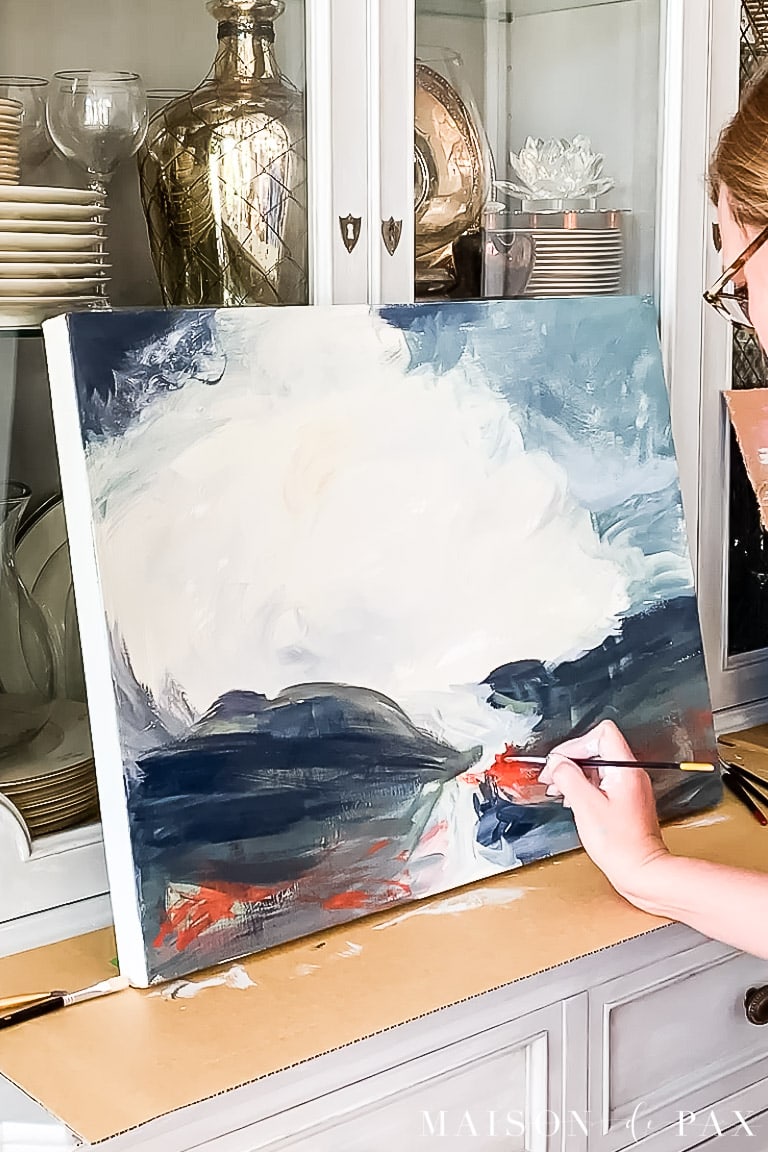
8. Frame it Well
There is something noble about canvas artwork in a beautiful frame, isn't there? If you chose a standard sized canvas, then you could purchase an open frame to match. Or you can DIY a frame (tutorial for this exact frame coming soon!).
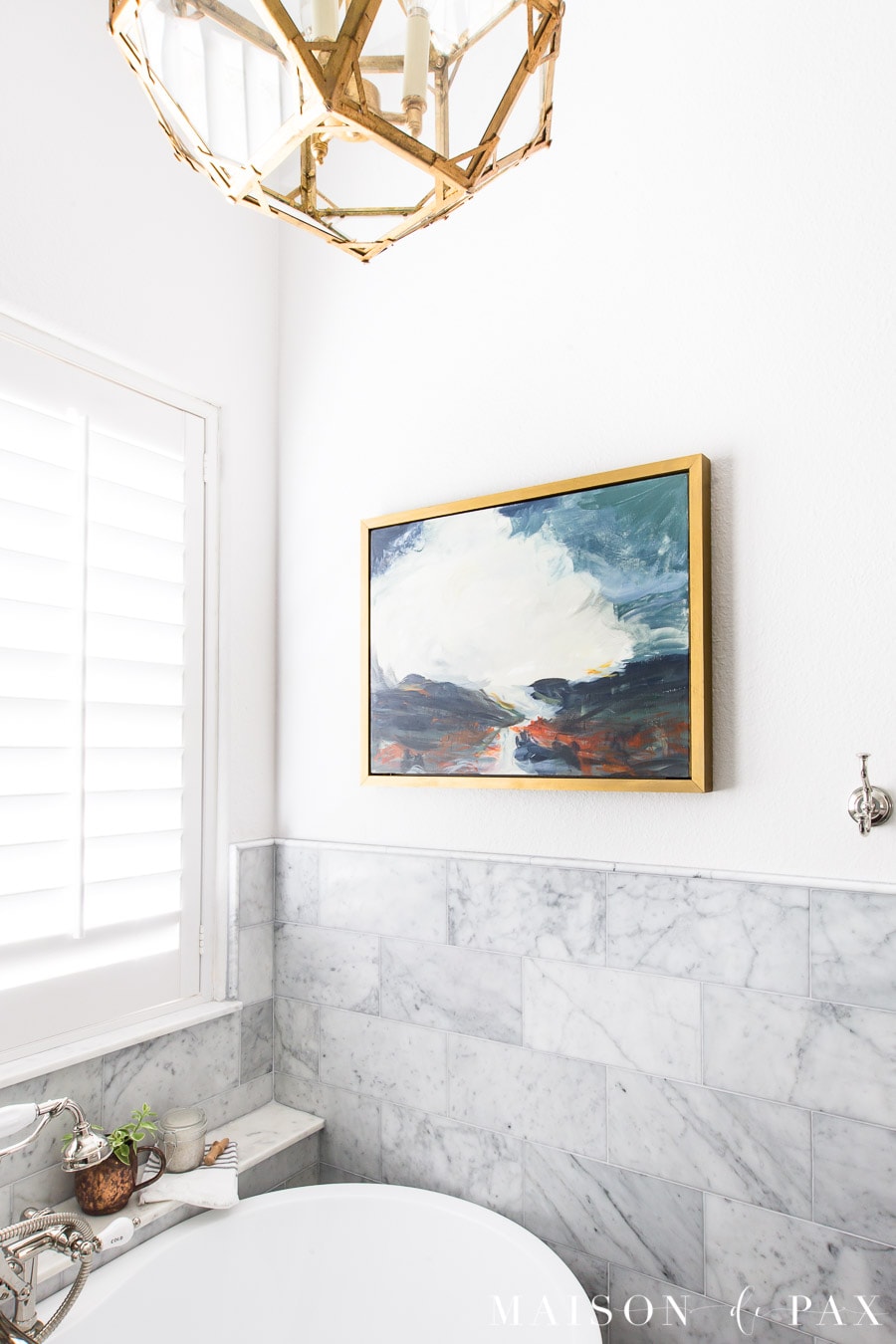
Either way, framing the piece will make it look that much more professional.

veachuntoonesch1968.blogspot.com
Source: https://www.maisondepax.com/diy-abstract-art-for-beginners-abstract-landscape/
0 Response to "Easy Landscapes to Draw Easy Abstract Landscapes"
Post a Comment